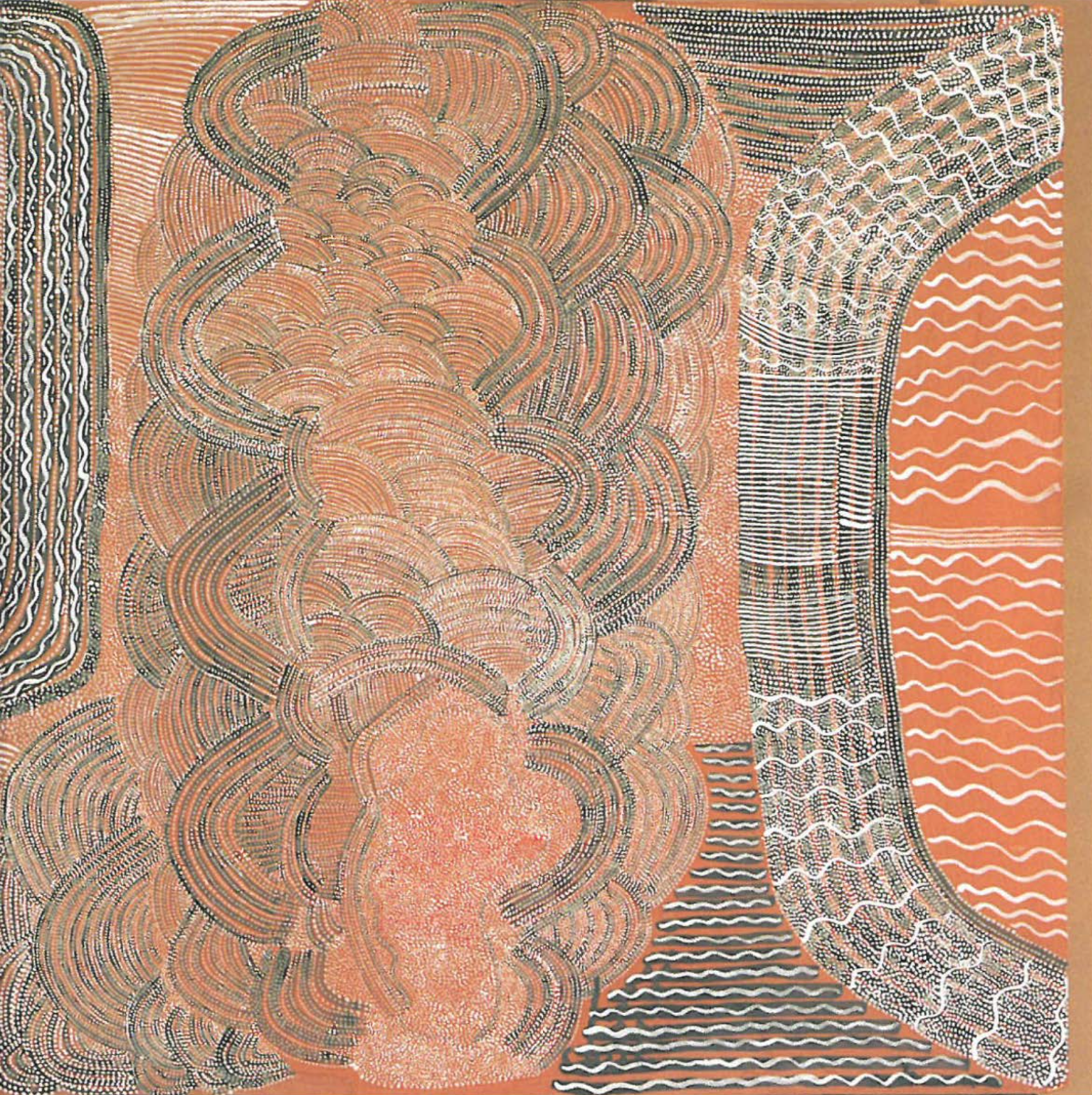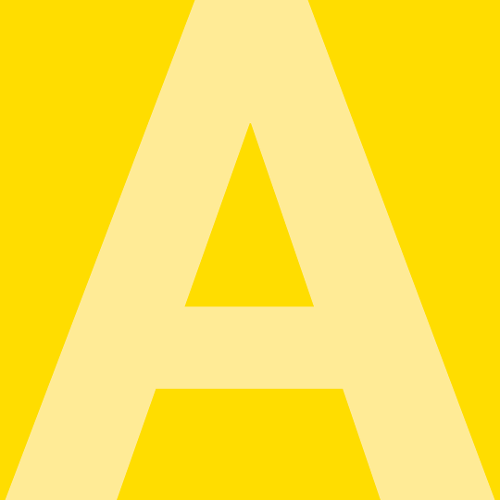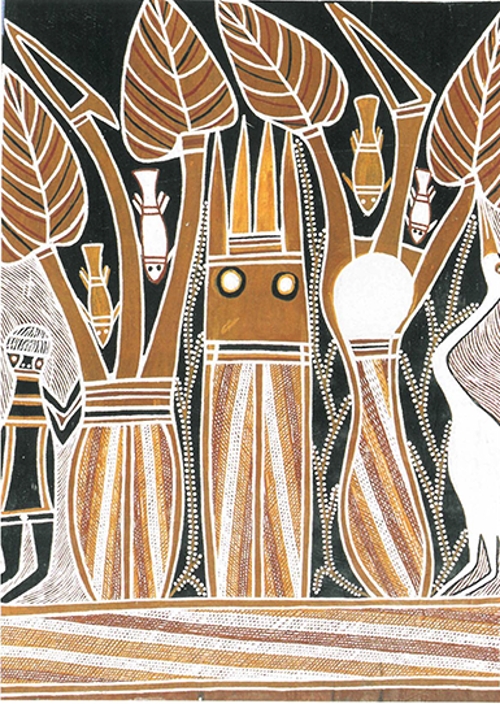
Queensland Art Gallery
At the time of his death in August, 1998, M.N. Tjapaltjarri was one of the greatest of all Australian artists. He was born c.1926 at Marnpi (Bronzewing Pigeon) Rockhole, west southwest of Alice Springs, well towards the WA border. Traditional travels with his parents took him in all directions about this locality, including north to Nyunmanu (a major dingo dreaming site for which he also had responsibilities) and the Ehrenberg Range, south to Lake Neale, east to the Cleland Hills and west and northwest to the Warnman Rocks and Warlungurru (Kintore). By the age of five years he had a good knowledge of all the key points in this south-eastern Pintupi country.
When his father was murdered by an Aboriginal avenger group and, in her anguish, his mother threw herself into a fire and died of her burns, the young Tjapaltjarri and his sister walked east, where they found kinfolk who cared for them.
In 1932 he had his first associations with Australians of European background and soon afterwards began attending school at Hermannsburg Mission. However, at about the age of eleven he commenced horse-tailing and other stock work for an old cattleman called 'Billy the Bunyip' MacNamara. The 'Namara' portion of the name was coincidentally similar to one of his traditional totems - that of the Mallee Fowl - and from then on his name became an Aboriginalised version of MacNamara. This cattle station work was in proximity to Areyonga, an early settlement, and it was here that he was initiated.
The establishment of Haasts Bluff cattle station and then Papunya in the 1950s and 1960s allowed him and his wife - as with many other Pintupi people - to move back closer to his traditional country. Although they were to have no children of their own, they adopted several children who became regarded as full members of the family.
In 1971, encouraged by Geoff Bardon, he commenced painting at Papunya. His early works often had a bare background of black or rich red-brown, but were by no means restricted to these colours. Favourite early depictions were related to the Moon Dreaming, and Geoff Bardon's film Mick and the Moon captures the wonderful variations in the artist's works at this time. Later he widely varied his artistic styles and, because he had an unusually large range of totemic sites for which he had responsibilities, developed a truly remarkable number of variant depictions. Thus, in addition to the Moon, he painted Dingo, Mallee-fowl, Wind, Kangaroo, Dancing Women, Tingarri Men, Wren, Crow, Naughty Boys, Hopping Mouse and Bandicoot Dreamings. During the 1980s he developed a dramatic red and white 'rectangle' and 'triangle' form which derived from certain traditional patterns, but by the late 1990s was creating dazzling works, often in yellow and white finger-tip stipples.
In 1981 he accepted an invitation to travel to Sydney where he and two other senior Pintupi men painted at the request of former Papunya-associated people who gave the name renegade to the exhibition - a good selling point in Sydney but a term never used by the artists themselves. Although involved in later interstate travels he much preferred to live at Papunya for health reasons and kinfolk ties. However, well after Warlungurru was established he moved there and was soon a key figure in the establishment of Nyunmanu homeland.
The 1990s found him back at Papanyu creating magnificent works. He won the National Aboriginal Art Award in 1991, by which time the National, most State galleries had began to acquire his works as well as many private collectors and overseas galleries .
Throughout his creative artistic time he remained loyal to the founding Papunya Tula Artists Company, of which he was a member, despite many private gallery owners and 'go-getter' individuals attempting to entice him to paint exclusively for them. He was an artist of integrity in all ways.












